Up to version 3.3 the HammerDB GUI operated with a fixed scaling factor of 1.33 pixels per point. That means regardless of monitor resolution HammerDB was set to use a fixed number of pixels. Therefore on a higher resolution screen as shown the HammerDB GUI would appear smaller than on a standard DPI display.
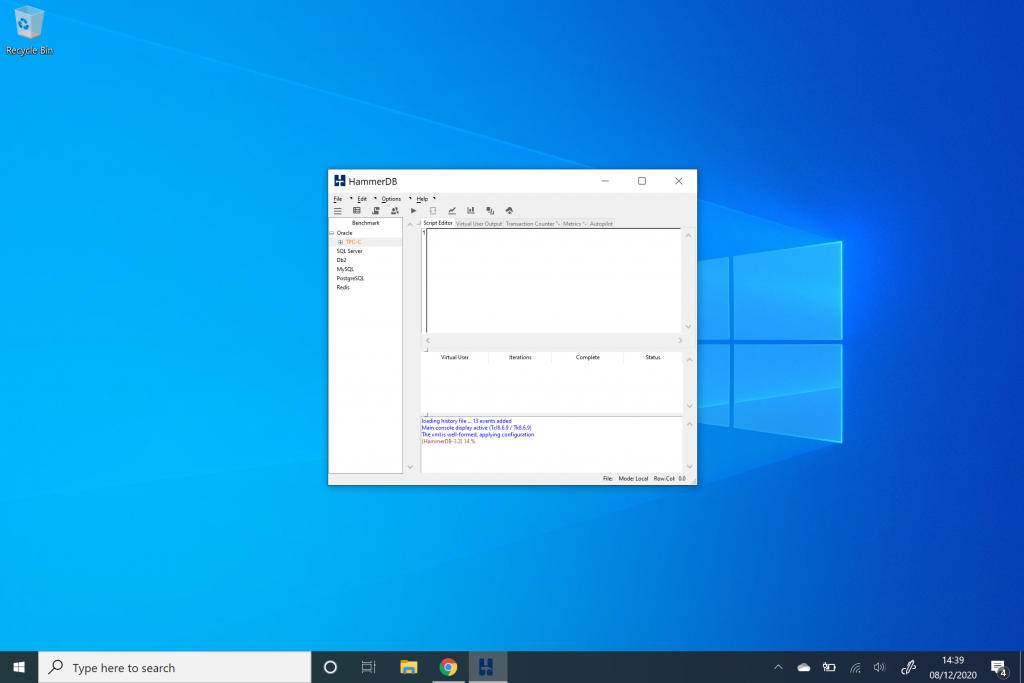
For most purposes this did not present an Issue and the HammerDB display rendered correctly up to 1920 x 1080 Full HD displays. However a GitHub Issue was raised because once moving to UHD displays with a pixel density beyond 1920×1080 the HammerDB interface became too small for use. Additionally these type of displays on devices such as PixelSense on Microsoft Surface Book were popular for presentations and demos and therefore the task was to update the HammerDB display to support scalable graphics. This meant that HammerDB would detect the display density and size the application interface accordingly. At HammerDB v4.0 the graphical interface has been extensively updated as shown to support UHD displays with pixel densities beyond 1920 x 1080 on both Windows and Linux.
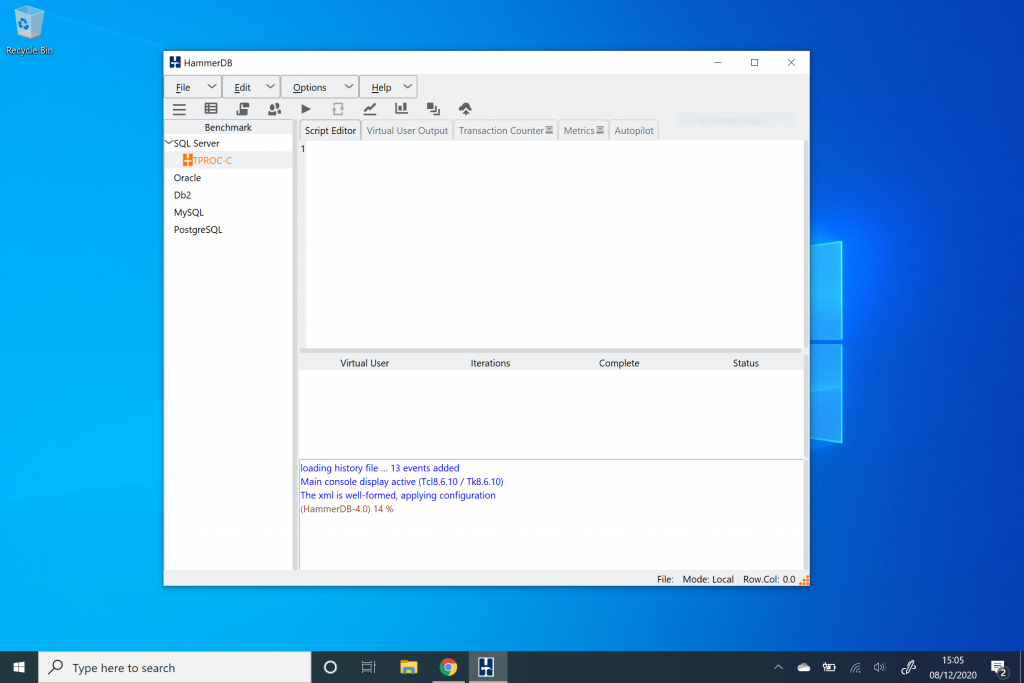
To achieve this scaling it was necessary to move from fixed PNG based graphics to SVG requiring all graphics and icons to be regenerated in the updated format and the interface rewritten to use SVG. Similarly it was necessary to use scalable fonts to ensure that the text scaled alongside the graphics. It was also needed to move to updated themes so that all dialogs and options scaled alongside the main display. With the move to the updated nomenclature of TPROC-C and TPROC-H already needing extensive re-documentation it was decided to delay the release of v4.0 in summer 2020 to invest the time in rewriting the interface to ensure usability on devices such as PixelSense displays.
Once the main interface was updated it was also necessary to update the transaction counter, otherwise the fixed display would have continue to render at a smaller size within the updated interface.
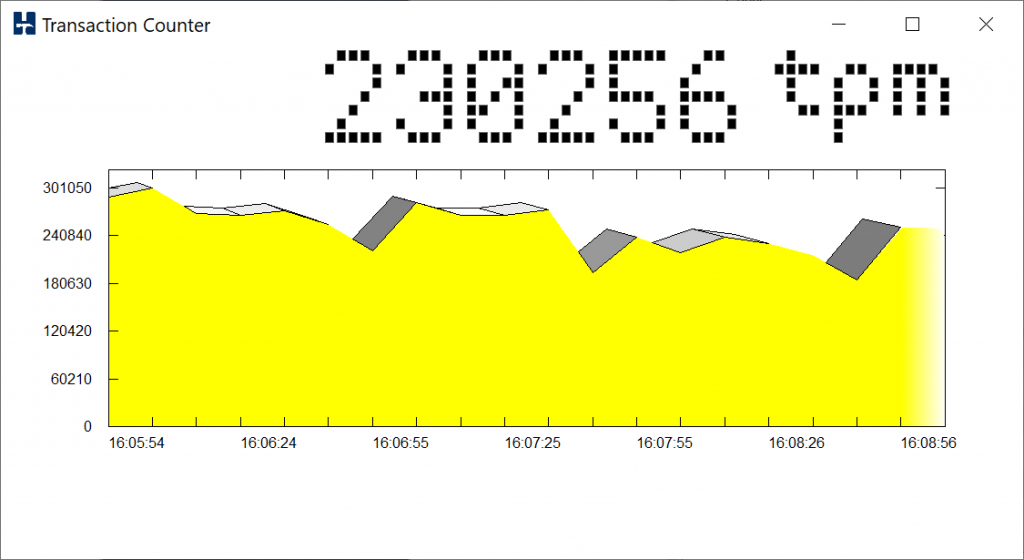
Similarly the CPU Metrics display was modified to scale in proportion to the main interface.
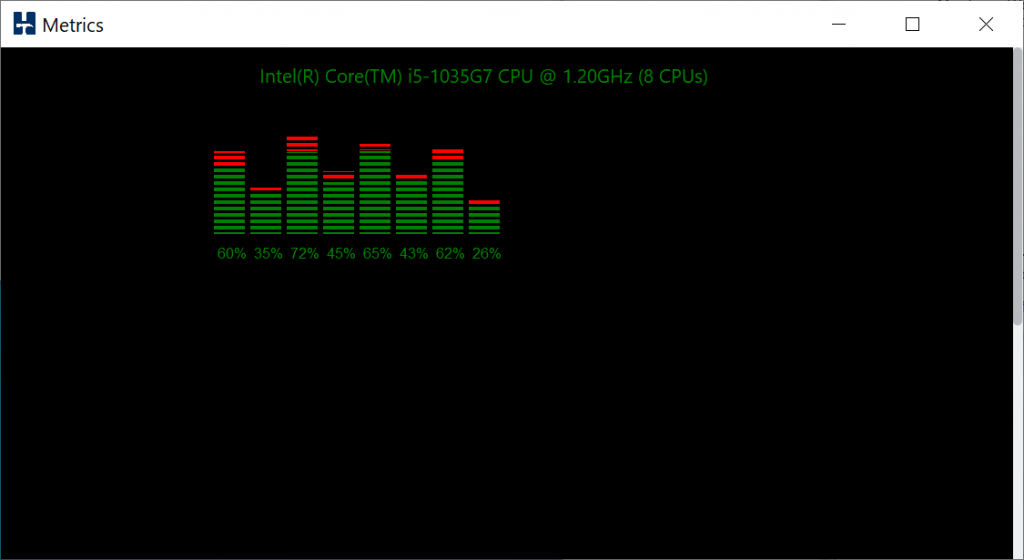
Finally it was needed to update the graphical Oracle metrics with the same scalability settings. Although this feature is only available for Oracle at v4.0 the plan is to make it available for other databases with future releases.
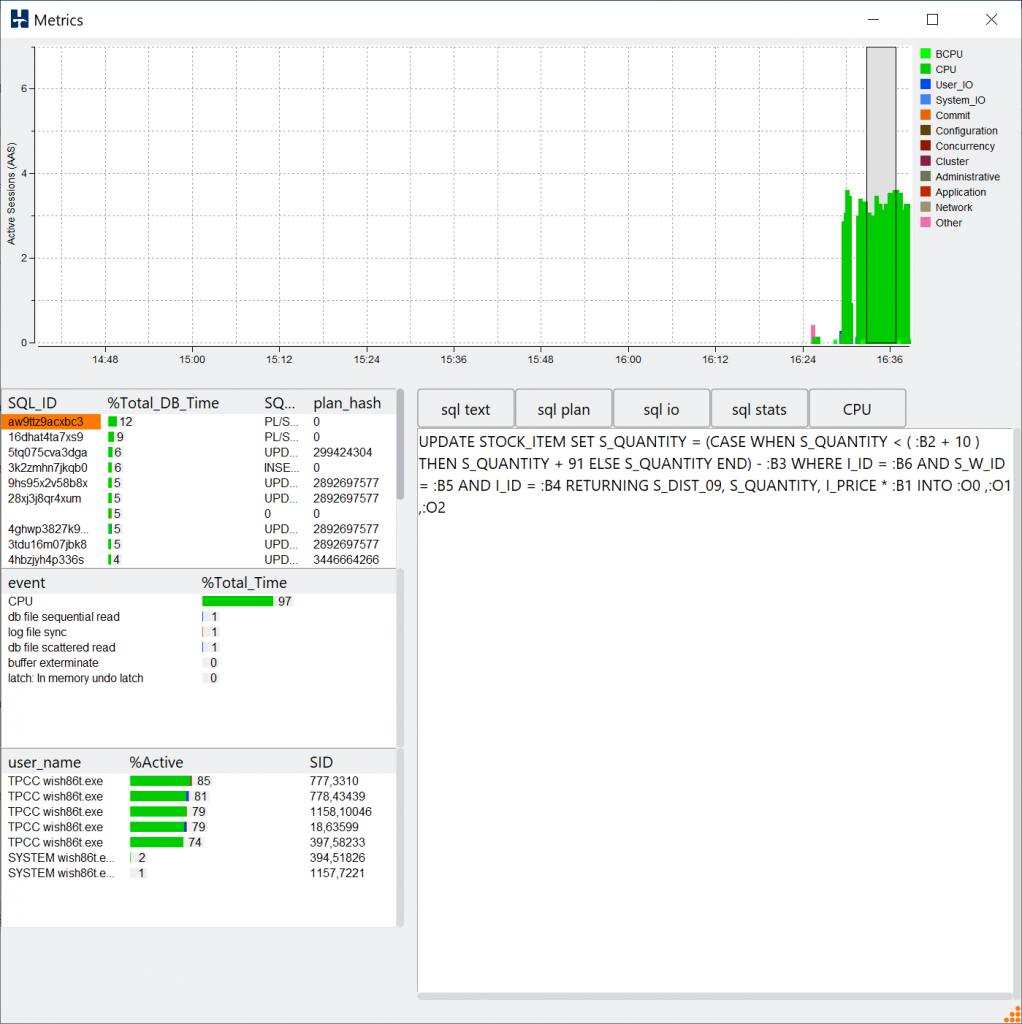
With these changes the entire HammerDB application supports scalable graphics with the feature tuneable by the settings in the generic.xml file in the config directory.
<theme> <scaling>auto</scaling> <scaletheme>auto</scaletheme> <pixelsperpoint>auto</pixelsperpoint> </theme>
By default all of the theme settings are set to auto and this is the recommended configuration. However they can be modified if required. Firstly the scaling setting can be changed to fixed to revert to the previous fixed non-scaling graphics. This could for example be used when using a remote X-windows display for faster graphics rendering when a faster alternative such as VNC is not available. For the scaletheme you can use settings of “auto”, “awlight”, “arc” or “breeze”, with “awlight” the default on Linux and “breeze” the default on Windows, with the plan to introduce more theme options over time.
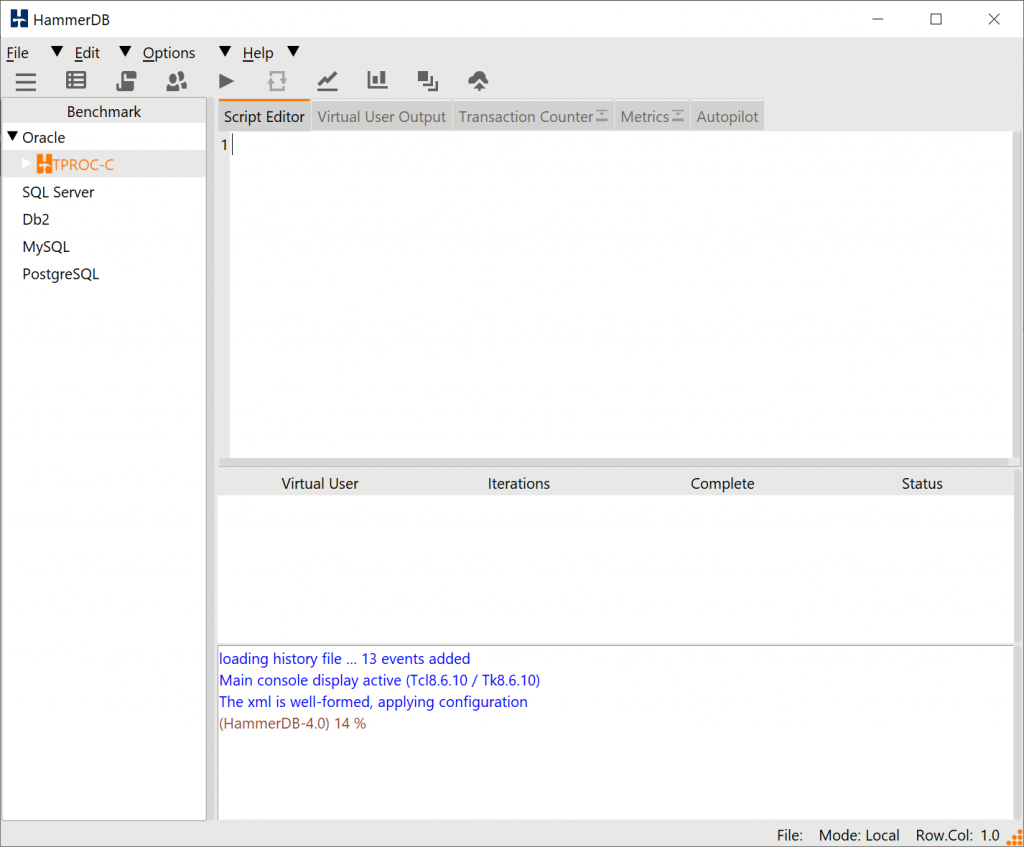
Finally pixelsperpoint is for expert usage to fine tune the scaling of HammerDB according to different screen settings.
Now that HammerDB is available with scalable graphics from v4.0 there is no longer any barrier to running database performance presentations and demos from devices with UHD displays.

